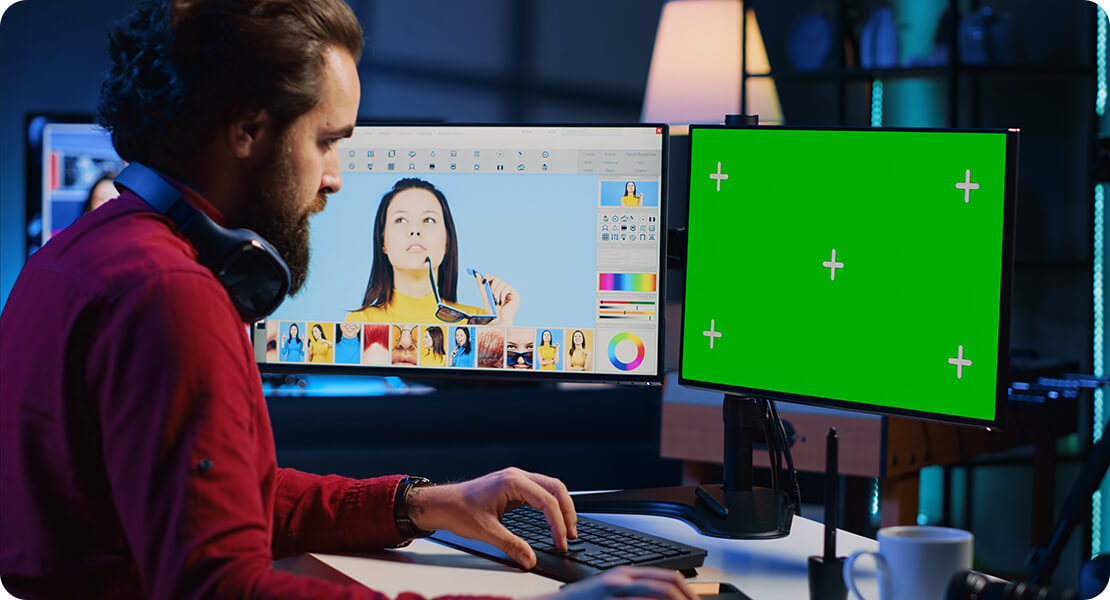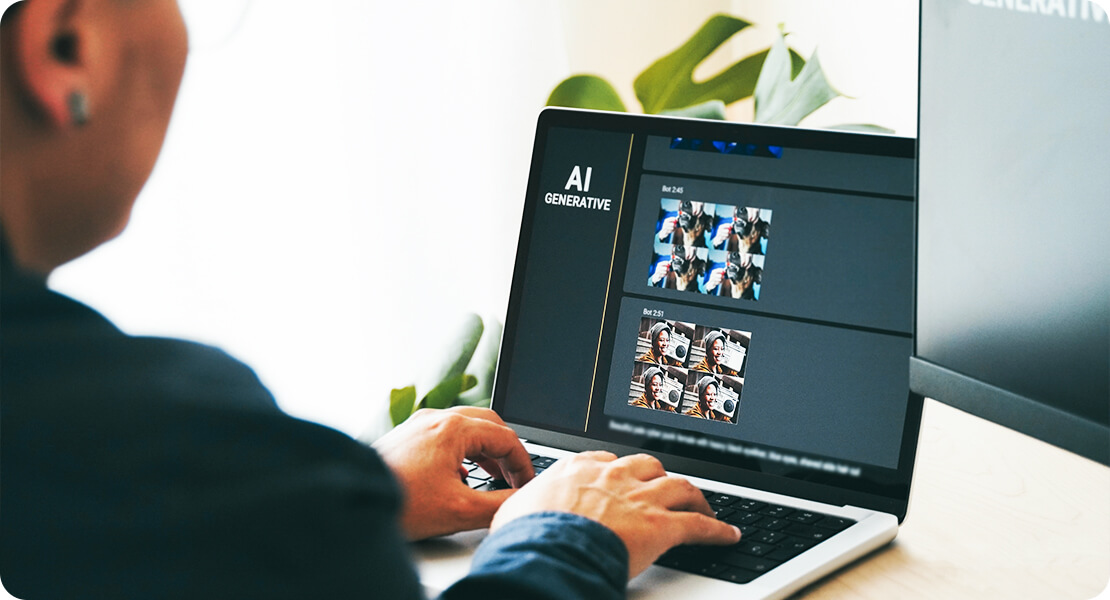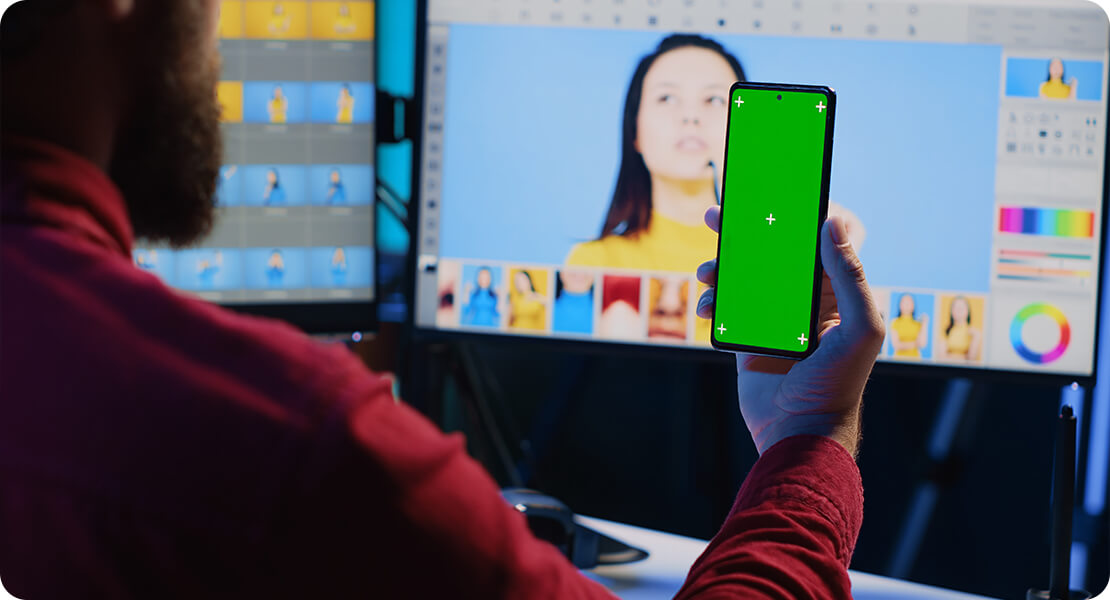
Animation has always been a blend of creativity and technology—but today, we’re witnessing a shift unlike anything before. Artificial intelligence (AI) is no longer just a buzzword; it’s becoming a core part of the animation process. Whether you’re a seasoned animator, a studio exec, or just someone curious about how the industry is evolving, it’s worth understanding how AI is reshaping the landscape.
From real-time rendering and automated lip-syncing to script-driven storyboarding and generative visuals, AI is now touching almost every stage of production. It’s not just changing how we work—it’s changing who can create, and how fast they can bring their ideas to life.
Let’s take a closer look at how AI is transforming animation—opening new creative doors, streamlining production, and, yes, sparking some debate along the way.
AI: From Hype to Hands-On Tool
For a long time, AI felt like something on the horizon. But now, tools powered by machine learning are embedded in everything from storyboarding to final rendering. You don’t have to be working for a major studio like Pixar or Aardman to see its impact. Independent creators, YouTubers, and even students are using AI-powered platforms to speed up workflows, create lifelike movements, and experiment with new artistic styles.
What once required a team of professionals and expensive equipment can now be explored by individuals on a laptop. AI is breaking down barriers to entry, allowing creators of all levels to bring their visions to life with fewer technical hurdles. It’s turning what used to be niche or high-budget production into something more open, intuitive, and accessible.
AI isn’t replacing artists—it’s giving them superpowers.
1. Speeding Up Traditional Workflows
The impact of all this? Faster turnarounds, streamlined pipelines, and more time available for storytelling, character design, and artistic decisions. Rather than getting bogged down in repetitive production tasks, animators can now focus on what really matters: crafting powerful, memorable visual stories.
Let’s be honest—animation has always required a huge investment of time and effort. From painstaking frame-by-frame drawings to perfectly syncing dialogue and polishing every movement, it’s a process that can take days or even weeks for just a few seconds of final footage. That’s where AI is stepping in to transform how animators work—not by replacing them, but by accelerating and enhancing their process.
- Auto
In-betweening
Traditionally, animators draw the key poses and then fill in the “in-betweens” to create smooth motion. Now, AI-driven tools can generate these intermediate frames automatically, based on the keyframes you provide. This is especially powerful in 2D animation, where maintaining fluidity and style consistency can be both time-consuming and labour-intensive. Tools like EbSynth and Spline help artists retain that hand-drawn feel while eliminating repetitive drawing tasks. This means less time spent on filler frames and more on expressive storytelling. - Lip-sync
Automation
Matching a character’s mouth shapes to speech used to be one of the more tedious parts of the job. Software like Papagayo-NG, Reallusion iClone, and Adobe Character Animator can now analyse audio and generate corresponding mouth movements almost instantly. These systems even account for phonemes and emotional nuance, making the results feel natural and expressive. In many cases, this also speeds up voice-over localisation for multilingual content creation. - Background
Generation
Creating detailed, atmospheric backgrounds used to require either a skilled background artist or extensive digital painting. AI models like DALL·E, Midjourney, and Runway ML can now generate stylised environments based on simple text prompts or concept sketches. Artists can use these outputs as base layers to develop further or even incorporate them directly, depending on the style of the project. This allows for rapid world-building during pre-production, especially in concept-driven projects.

2. Democratising Animation for Everyone
AI is truly levelling the playing field. Not long ago, producing high-quality animation meant access to costly software, dedicated teams of artists, and months of painstaking work. But today? Tools like Runway ML, D-ID, Kaiber, and Animai have opened the door for solo creators, educators, hobbyists, and small studios to produce animated content that looks remarkably professional—with just a fraction of the resources.
A solo animator can now produce music videos, explainer animations, social media content, and even short films entirely from their laptop. With cloud-based platforms and user-friendly interfaces, you don’t need a high-end machine or expensive editing suite to get started. Many tools are browser-based, meaning you can animate from almost anywhere with a stable internet connection.
For example, Runway ML allows users to input a prompt or upload an image and transform it into animated sequences using simple controls. You can create motion, edit frames, or apply stylistic effects—all without writing a single line of code. Meanwhile, D-ID can generate lip-synced animated portraits from a still image and a script, making it incredibly easy to bring characters to life for narrations, educational content, or voiceover scenes.
Kaiber and Animai focus on visual storytelling, offering motion control, style transfer, and camera simulation options that were once reserved for large production houses. You can storyboard, animate, and render entire scenes directly on your laptop, adjusting the pace and tone of your project in real time.
AI voice generators and music platforms such as ElevenLabs, AIVA, and Soundraw can help you build a complete soundscape around your visuals—providing everything from character dialogue to ambient effects and cinematic scores. This means a solo creator can handle every stage of production, from concept to final export, with nothing more than a modest laptop and a creative idea.
This democratisation of technology is a genuine game-changer for the industry. It empowers voices from underrepresented backgrounds, smaller nations, and non-traditional creative paths to tell stories that may have previously been out of reach. It also makes animation far more accessible in education—allowing students and teachers alike to explore storytelling, design, and digital literacy without expensive equipment or specialist training.
Whether you’re developing content for social platforms, pitching a concept to clients, building a portfolio, or simply experimenting for fun, AI puts professional-grade animation tools at your fingertips. You no longer need a studio to create something spectacular—just your laptop, imagination, and the willingness to explore what’s possible.

3. Experimenting with Style and Storytelling
Here’s where it gets truly exciting. AI isn’t just about saving time—it’s actively reshaping how we approach creativity, experimentation, and storytelling.
- Style transfer
Want your animation to look like it was painted by Van Gogh? Or mimic the visual flair of a 1930s cartoon? AI-powered style transfer tools can now apply specific artistic aesthetics across entire sequences, maintaining consistent brushwork, colour schemes, and even line quality. This means you can explore bold new visual directions without manually redrawing or retexturing every frame. It also opens up creative opportunities for referencing historical art movements, pop culture aesthetics, or even creating entirely new hybrid styles. With a few well-crafted prompts, you can reimagine your story in multiple visual styles, all within minutes. - Script-to-animation platforms
Emerging tools such as StoryboardHero and Kaiber allow you to input a written script, character notes, or scene descriptions and quickly generate a rough animated visualisation. These platforms combine text-to-image generation, motion tools, and basic editing features to help you sketch out ideas in a fraction of the time traditional methods would take. While these outputs aren’t yet ready for broadcast, they’re incredibly useful for prototyping, pitching, or getting stakeholder feedback early in the creative process. You can iterate multiple versions of a scene without having to commit large amounts of time or resources—perfect for early development or proof-of-concept work. - Generative sound and music
AI is no longer limited to visuals—it’s also revolutionising sound. Need custom background music tailored to the mood of your animation? Platforms like AIVA, Boomy, and Soundraw can compose unique tracks based on tone, tempo, and genre. You can also generate ambient effects—like city sounds, forest ambience, or sci-fi drones—without needing access to a sound designer or large effects library. Even character voices can now be created using AI voice generators, which can deliver varied tones, accents, and emotions. This massively enhances storytelling and immersion, especially for creators working solo or on tight budgets.
These AI-driven tools don’t just save time—they empower creators to explore narrative ideas and stylistic approaches more freely. You can test a new direction, refine your vision, or produce compelling prototypes without having to invest weeks or thousands of pounds in development. It’s creativity, unchained.

4. Challenges and Ethical Considerations
It’s not all smooth sailing. While AI brings enormous potential to the animation industry, it also presents a series of complex ethical challenges—ones that we can no longer afford to ignore. As with many emerging technologies, the speed of innovation is currently outpacing regulation, leaving grey areas that must be carefully navigated.
• Authorship and Ownership
One of the biggest and most immediate
questions is: who owns AI-generated work? If you type a prompt into an AI art
generator and receive a stylised animation frame, is that your creation? Or
does some of the credit belong to the tool’s developer—or even the artists
whose work was used to train the model?
This becomes particularly complicated when AI tools are trained on datasets
that include unlicensed artwork or copyrighted content. As a result, creators
can unintentionally replicate the style of a specific artist without realising,
blurring the line between inspiration and imitation. Without clearer legal
frameworks, creators risk both unknowingly infringing on others’ rights and
struggling to protect their own.
• Job Displacement and the Devaluation of Human Skill
While
AI can streamline workflows and boost productivity, there’s a real concern that
it could lead to job losses—especially in entry-level or routine creative
roles. Tasks such as in-betweening, lip-syncing, or background art, which were
once seen as stepping stones for junior animators, may be increasingly handled
by automation.
This shift could reduce opportunities for newcomers to break into the industry
and learn through experience. There’s also a fear that studios might begin to
favour speed and cost over craftsmanship, leading to a devaluation of human
artistry and a homogenisation of visual style.
• Bias, Representation, and Style Cloning
AI
systems inherit the biases of the data they’re trained on. If the training data
lacks diversity, this can lead to stereotyping or exclusion of underrepresented
groups in character design or storytelling suggestions. Furthermore, style
cloning—where a tool mimics the distinctive look of a known artist without
permission—is becoming a flashpoint.
Many creators have reported finding work that closely resembles their own
produced by others using AI prompts. The lack of consent, attribution, and
control over how one’s style is used can feel like a direct violation of
artistic identity.
As AI continues to evolve, the animation industry must develop clearer frameworks around intellectual property, creative credit, and ethical usage. Transparency is key—not only in how tools are developed and trained, but also in how they’re deployed in professional settings. Until then, it’s up to creators, studios, and audiences to push for responsible innovation that values both human creativity and technological advancement.

Let’s make sure that as AI grows, it does so with ethics in mind—not just efficiency.
5. What the Future Might Look Like
Looking ahead, it’s increasingly clear that AI won’t replace human creativity—it will enhance it. Instead of being viewed as a competitor, AI is poised to become a powerful co-creator. You might brainstorm with a chatbot, sketch out ideas with text prompts, generate character designs in seconds, or even direct entire animated scenes using nothing but your voice.
One of the most exciting developments is the rise of conversational creativity. Imagine briefing an AI assistant about your story idea: it suggests character arcs, moodboards, and visual styles—all within minutes. You can then refine those suggestions, give feedback, and move on to generating animatics or rough storyboards. This kind of rapid iteration allows creators to explore more ideas without being bogged down by the early production slog.
Hybrid workflows will likely become the new industry standard. Studios may combine hand-drawn elements, 3D modelling, motion capture, and AI-generated sequences into seamless final products. Animators could use AI to block out a scene, then go back and refine the expressions or poses by hand—speeding up the process while maintaining creative control. This approach allows for greater flexibility in production pipelines, enabling teams to iterate and experiment without restarting from scratch.
AI-driven previsualisation is also on the rise. Directors and writers will soon be able to test entire story arcs using AI-generated animatics and scene mock-ups. This can save weeks of planning and resources, especially in the pitching stage. Instead of trying to explain a vision on paper, creators can show a rough, animated version of their idea to producers, clients, or collaborators. These visual previews help teams align faster and make more informed creative decisions from the outset.
And as AI systems continue to develop, they’ll begin to learn your individual style and preferences. Imagine a tool that knows how you like to shade characters, how you pace scenes, or how you animate movement—and automatically adapts to your artistic language. These personalised AI assistants could act more like creative partners, helping you produce content more quickly, intuitively, and with less friction.
For those working in the industry today—whether as animators, directors, designers or producers—learning how to collaborate with AI could be the smartest move you make. The skills of the future won’t just be about drawing or coding—they’ll be about how you creatively interact with intelligent tools.
Those who embrace these tools early will not only stay ahead—they’ll help shape the future of animation itself.

Final Thoughts
AI is changing the animation landscape—but it’s not taking the soul out of it. If anything, it’s offering creators new ways to tell stories, experiment with form, and bring their ideas to life faster than ever before. Technology doesn’t eliminate creativity; it reshapes the tools we use to express it. Just like digital tablets didn’t erase traditional drawing, AI won’t erase artistry—it simply opens up fresh possibilities.
Yes, there are challenges ahead. We’ll need thoughtful conversations around authorship, ethics, and the future of creative careers. But at its best, AI doesn’t replace human imagination—it amplifies it. It turns what was once impossible into something you can now experiment with over a weekend. Whether you’re a traditional animator, a self-taught creator, or someone just beginning their animation journey, there’s a place for you in this evolving world.
The key is to approach AI with curiosity, not fear. See it as a creative companion, not a competitor. And remember—you’re still the storyteller. The emotion, the pacing, the meaning behind each scene? That’s something only a human can craft.
So go on—experiment with that new tool, try out an AI-powered storyboard, or render your next character with the help of machine learning. You might just be surprised at what you create. And more importantly, you might discover a whole new way of bringing your vision to life. If you’re curious about how AI-based animation can help grow your business, feel free to contact us at Spiel—we’d be happy to show you what’s possible.

